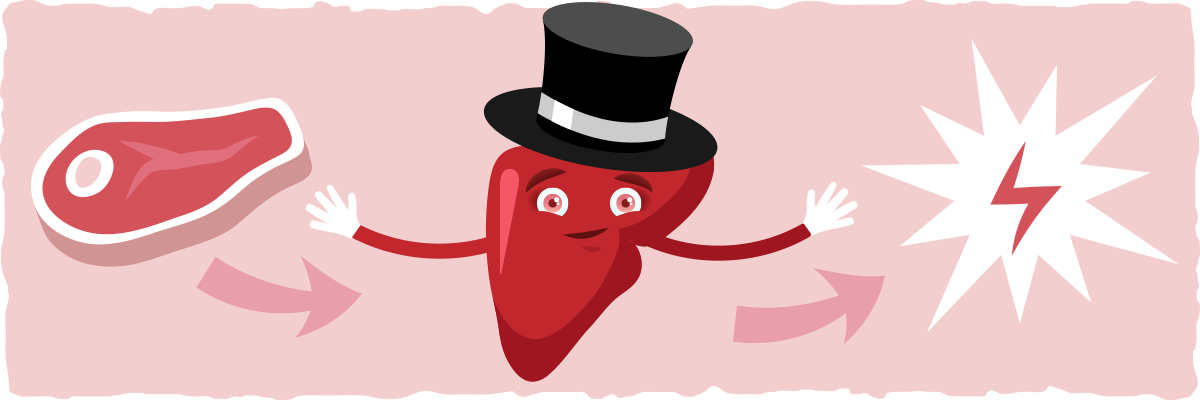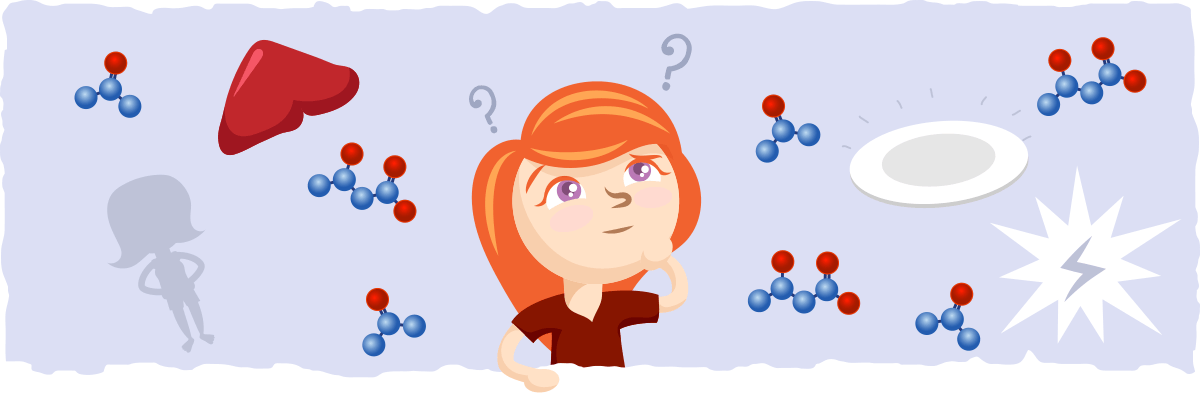It is time to answer the question, what is gluconeogenesis? But first, it is important to know some background information on your body’s fat-burning process:
Eat fat burn fat. Eat carbs burn carbs. It’s that simple, right? Yes and no. There’s more to it.
Your body has many different metabolic pathways that it uses to provide energy for your cells. Glycolysis (using sugar for fuel) and lipolysis (using fat for fuel through beta-oxidation) are the most well-known metabolic pathways, but there are many more. One pathway, in particular, can turn the amino acids from protein into fuel.
Why does it matter? Because this may be the one thing that is holding you back from getting into ketosis and losing fat while you are on a ketogenic diet.
If you are under some form stress or consume excess protein, your liver will perform a magic trick called gluconeogenesis. This literally translates to “the making of (genesis) new (neo) sugar (gluco)”.
During gluconeogenesis, the liver (and occasionally the kidneys) turns non-sugar compounds like amino acids (the building blocks of protein), lactate, and glycerol into sugar that the body uses a fuel. When glycogen (your body’s sugar storage) is low, protein intake is high, or the body is under stress, amino acids from your meals and your muscle become one of your main energy sources.
If your body continues to convert amino acids into fuel, it can keep you from getting into ketosis. This is why some ketogenic dieters may experience an increase in body fat percentage and a decrease in muscle mass during their first couple weeks on the ketogenic diet.
But there is no need to worry. The ketogenic diet will still help reverse common health issues like diabetes and obesity and improve health in many ways. When you start the diet, however, gluconeogenesis will get in the way.
Is Gluconeogenesis Bad? One of the Problems With Going Ketogenic
During the first three days of the ketogenic diet, stored glycogen and amino acids are the body’s main fuel sources. At first, however, glycogen is the dominant fuel source. Once glycogen is almost all used up, amino acids from your food and your muscle become your main fuel source.
But the body can’t keep burning amino acids for fuel forever. We need them to perform many other functions that are necessary for our survival.
For example, amino acids help build and repair tissues like the hair, nails, bones, muscles, cartilage, skin, and blood. Many enzymes and hormones are made from amino acids as well. In other words, using amino acids as energy for a long period of time is a bad idea.
This is why the body has two other fuel sources — fat and ketones — that help preserve health and maintain muscle mass. The only problem is that the body doesn’t use them right away.
When Does The Body Use Ketogenesis Instead of Gluconeogenesis?
To find out when the body shifts into ketogenesis (using ketones as fuel), let’s look at what happens when the body is in a fasted state. In a review of multiple fasting studies, researchers found that it takes between 18 and 24 hours to deplete glycogen stores and more than 2 days after that for the body to shift into ketosis.
That’s two days without glycogen or ketones for fuel! How is the body fueling itself during that time? With gluconeogenesis.
In one case study, a 41-year-old healthy man decided to do a 40-day fast under medical supervision. To indirectly measure if he used amino acids for energy, researchers tracked the nitrogen levels in his urine.
During the first week of his fast, the man’s total urinary excretion of nitrogen was 10 to 12 grams per day. On the third week, it dropped significantly. According to the researchers, this significant drop in urinary nitrogen levels signifies that the man shifted from using mostly amino acids for fuel to using fat and ketones for fuel. A shift that took the man much longer than two days to accomplish.
It is important to realize, however, that this is what happened for one 41-year-old healthy man. Everyone responds to fasting and ketogenic diets differently.




0 Comments